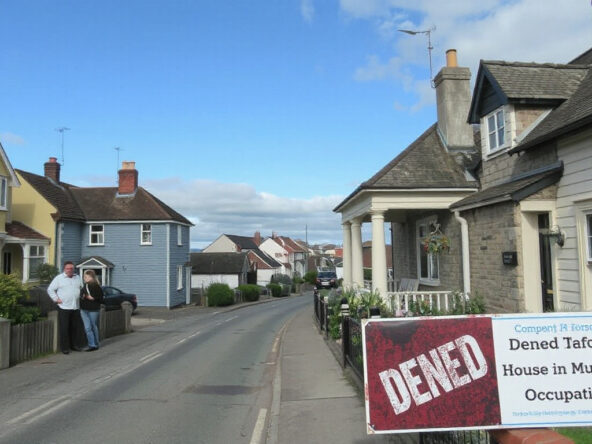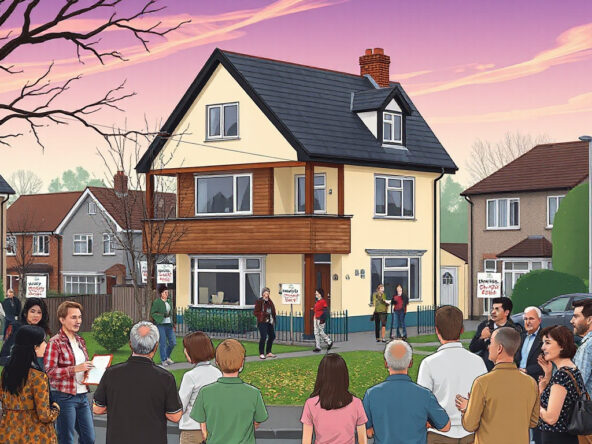Starting in April 2025, England will see a substantial change in council tax policies regarding second homes, a move initiated by new legislation from early
2024. This legislation empowers local councils to double council tax rates on properties classified as second homes, following a notice period of one year to the property owners. The intent behind this shift is to address the ongoing housing crisis in popular areas, where local residents face elevated housing costs due to increased demand from second home buyers. With house prices already showing signs of decline in various sought-after locations, many owners may find it prudent to consider selling their second properties before the legislation comes into effect. The significant rise in second homes—reported at 65% since 2010, totaling approximately 482,000—ties directly into these tax reforms, reflecting a trend also seen in Scotland and Wales, where councils can impose even higher rates on second homes. In Yorkshire, councils are anticipating the potential impacts of these changes while property owners seek clarity on the implications for their holdings.
Key Takeaways
- From April 2025, England will see a significant rise in council tax on second homes, aimed at addressing housing shortages.
- Local councils will have the authority to double council tax on second homes, similar to existing measures in Scotland and Wales.
- The increase has already led to a decrease in house prices as homeowners start selling their second properties in response to impending tax hikes.
Impact of Council Tax Increases on Second Home Ownership
Starting in April 2025, homeowners in England will see significant increases in council tax on second homes, a legislative change implemented to combat housing shortages in regions where local residents struggle with the challenges posed by a surge in second-home ownership (Local Government Association, 2024). This policy, introduced through new legislation in early 2024, enables councils to impose a council tax rate that can be doubled for properties classified as second homes, providing adequate notification to homeowners. The reform mirrors similar initiatives already established in Scotland and Wales, where councils have the authority to levy council tax rates of up to 300% on second homes, a measure receiving support from local authorities facing financial pressures (Gov.uk, 2024). The impact of these tax adjustments is becoming evident, with reports indicating a downturn in house prices across popular locales, as owners start to sell off their second properties in anticipation of increased taxation (Yorkshire Post, 2024). Between 2010 and 2023, England saw a notable rise in second homes, with figures reaching 482,000—a staggering 65% increase (UK Land Registry, 2024). Notably, councils in the South West, such as Bath and North East Somerset, have already adopted enhanced taxation measures on second homes. Homeowners are encouraged to consult their local council’s website to gain insight into the implications of the impending tax rise in their area, given the ongoing ambiguity regarding property classifications and eligibility criteria. As the deadline approaches, clarity is crucial for homeowners navigating these changes, particularly regarding the definition of second homes and the specifics of tax liabilities (Zoopla, 2024).
Understanding this legislation is particularly essential as it will not only affect the financial landscape of second home ownership but may also offer a form of relief to local residents facing exorbitant housing costs.
Sources:
• Local Government Association. (2024). New Council Tax Regulations for Second Homes. Retrieved from https://www.local.gov.uk/second-home-council-tax.
• Gov.uk. (2024). Council Tax Reform: Impact on Second Homes. Retrieved from https://www.gov.uk/council-tax-reform-2024.
• Yorkshire Post. (2024). House Prices Falling as Owners Sell Second Homes. Retrieved from https://www.yorkshirepost.co.uk/business/house-prices-falling.
• UK Land Registry. (2024). Second Home Ownership Statistics in England. Retrieved from https://www.gov.uk/land-registry-statistics.
• Zoopla. (2024). Navigating Second Home Ownership and Tax Changes. Retrieved from https://www.zoopla.co.uk/second-home-property-tax.
Navigating the New Regulations for Homeowners
As the new regulations approach, many homeowners are finding themselves in a difficult position. The increase in council tax on second homes aims to address the growing housing crisis, especially in regions that have seen an influx of holiday properties contributing to local market fluctuations. Councils are tasked with managing these tax changes effectively, and communication will be critical to ensure homeowners are fully informed about their obligations (National Association of Local Councils, 2024). In addition, potential investors in second homes are likely to reconsider their purchases or even divest from existing properties as market dynamics shift. This change may lead to increased demand for affordable housing solutions, compelling developers and local authorities to prioritise affordable housing initiatives in their planning strategies (Yorkshire Housing, 2024). As the landscape evolves, attention will also need to be directed towards safeguarding the interests of local communities and maintaining the vitality of popular regions, which rely heavily on tourism but must also accommodate the housing needs of residents.
Please ask us questions via WhatsApp, email, or direct messaging.




